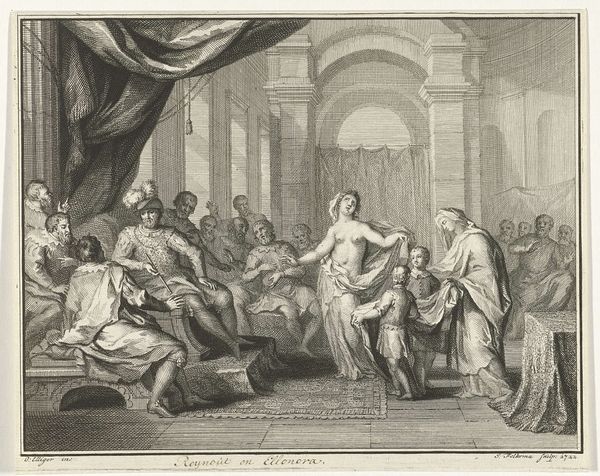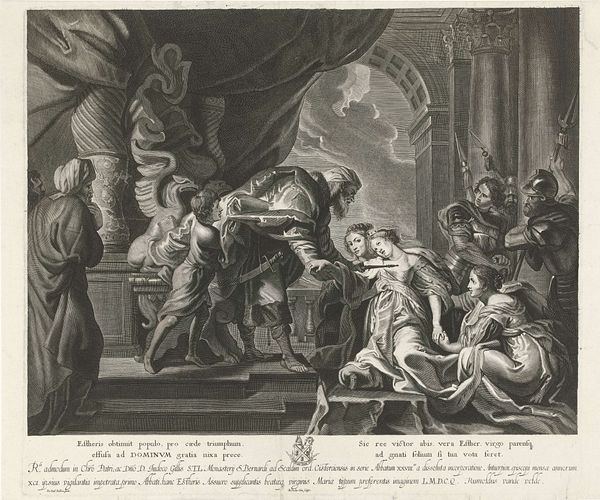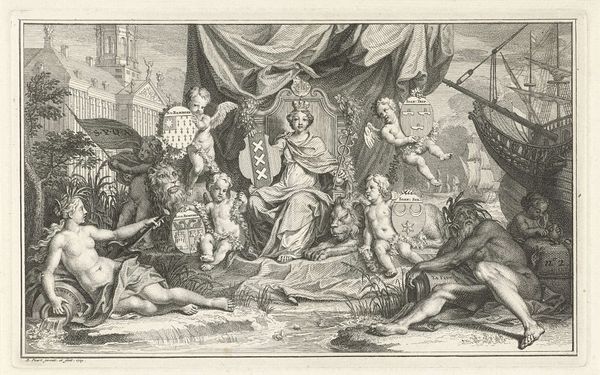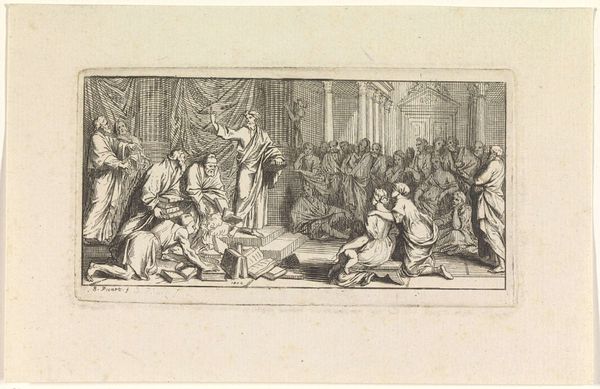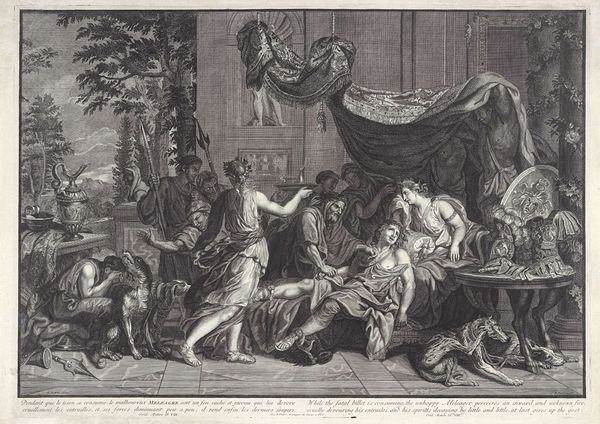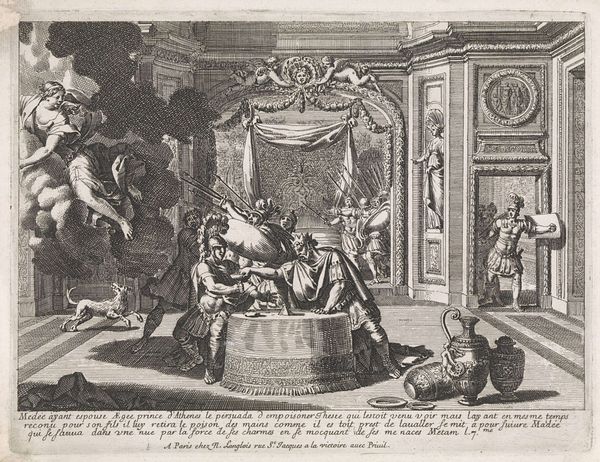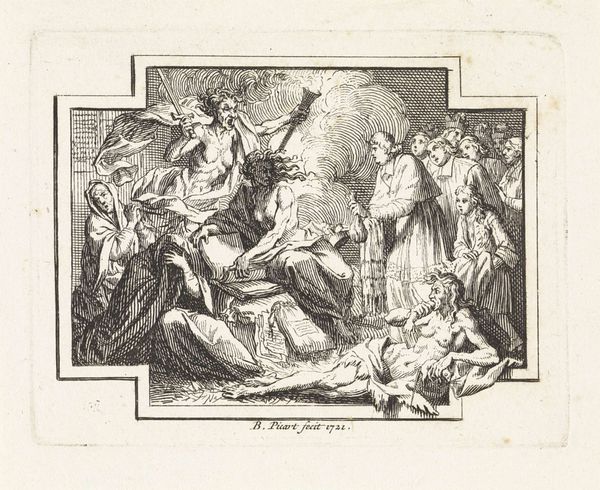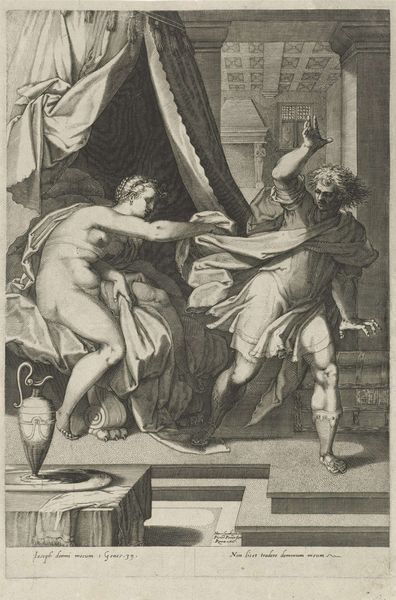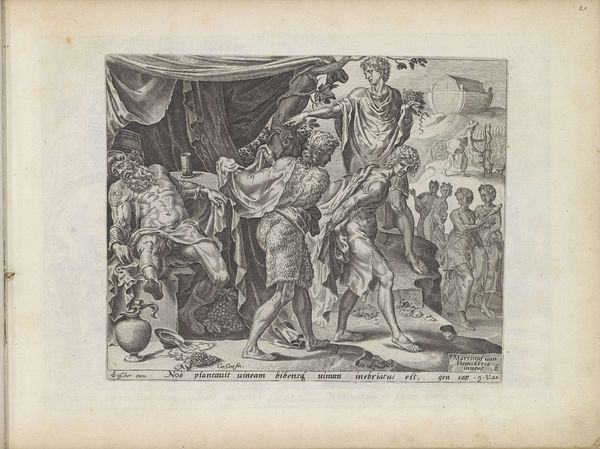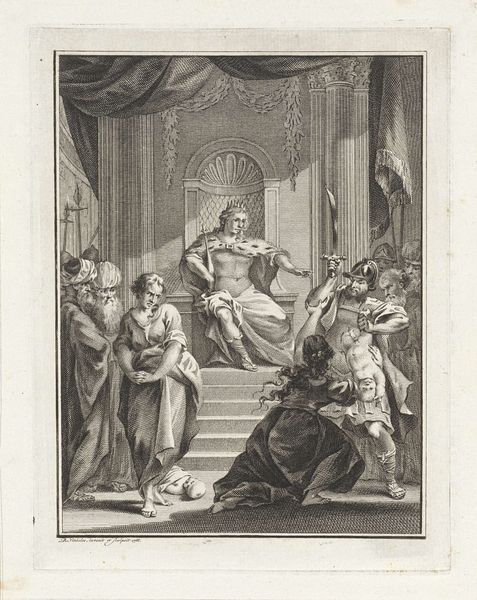
engraving
#
baroque
#
old engraving style
#
caricature
#
history-painting
#
engraving
Dimensions: height 147 mm, width 187 mm
Copyright: Rijks Museum: Open Domain
Curator: This is "Discussie tussen minderbroeders en pauselijke afgezanten," or "Discussion between Friars Minor and Papal Envoys," an engraving dating from 1721, created by Jacob Folkema, now held in the Rijksmuseum. Editor: Immediately, I'm struck by the dynamic composition, how Folkema manages to convey such intense conflict and tension with fine lines and stark contrasts. There's an almost theatrical quality to the scene. Curator: Yes, that tension is masterfully crafted through symbolic arrangements. Note the Pope elevated on his ornate throne, framed by ecclesiastical symbols, literally elevated above the turmoil below. That theatricality might stem from Baroque aesthetics, or it could be exaggerating papal authority, considering the subject. Editor: The "subject" being this intense dispute. It’s more than just religious aesthetics; there’s clearly a power struggle represented. We see the Franciscans seemingly pleading their case to the papal envoys, but the fallen figure in the foreground evokes images of defeat and potentially symbolizes a crisis of faith. Curator: Indeed, it speaks volumes about challenges to papal infallibility, or critiques of the Church’s temporal power at the time. The light draws the eye to that central figure on the throne. Editor: I agree. Even beyond that spotlight, I think it really begs the question, whose story is being told here? The image seems sympathetic to the Friars Minor. This dispute likely touches on the church's interaction with the poor or their broader commitment to the original message. Curator: It's hard to say definitively. Visual rhetoric often served multiple purposes. Perhaps it's not about siding with one faction, but more about using a well-known narrative to question broader concepts of authority and piety. The cultural memory embedded in this religious imagery would have been readily accessible. Editor: The power of religious imagery to embody the dynamics of political struggle truly resonates even now. It reminds us that art often functions as a record and, potentially, as resistance. Curator: Ultimately, this engraving reveals the subtle and persuasive language of imagery in mediating social discourse. It is through repeated symbols that cultural meaning perpetuates. Editor: And by disrupting these established meanings that progress becomes possible.
Comments
No comments
Be the first to comment and join the conversation on the ultimate creative platform.
